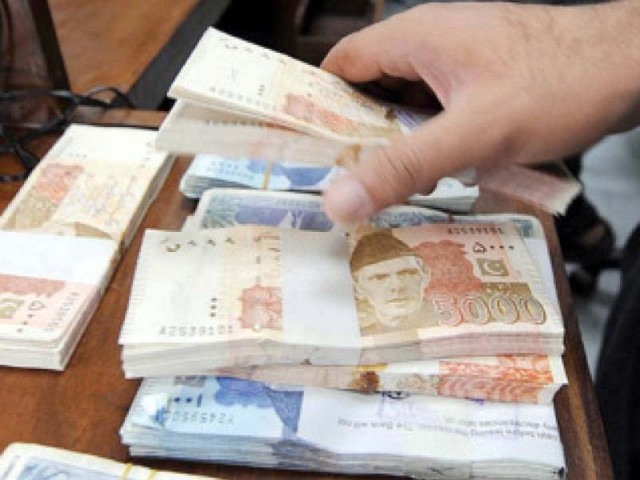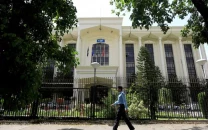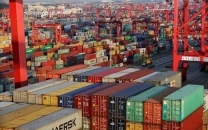To appease IMF, exchange rate gap slashed further
Spread between inter-bank, retail markets narrows to Rs5 to a dollar

Pakistan has successfully narrowed the rupee-dollar exchange rate gap between inter-bank and open markets to the targeted level of Rs5, meeting a major condition of the International Monetary Fund (IMF).
It came after Pakistani rupee gained further ground against the US dollar mainly in the retail market on Tuesday. The central bank and currency dealers had targeted to reduce the spread to around 2% (or Rs5) after the IMF expressed concerns over the prevailing disconnect between the two markets.
The rupee further appreciated 0.68%, or Rs2, at Rs294/$ in the open market. Similarly, it ticked up 0.01%, or Rs0.04, to Rs287.22/$ in the inter-bank market.
The creation of synergy between the two markets was one of the three conditions underlined by the IMF for the revival of its stalled loan programme worth $6.7 billion.
Earlier, Prime Minister Shehbaz Sharif met a number of influential world leaders, mostly diplomats having say in the IMF to highlight the efforts made to revive the programme before its expiry on June 30, 2023. About three weeks ago, he also talked to IMF Managing Director Kristalina Georgieva to discuss the possibility of resuming the programme.
The exchange rate spread had widened to Rs27 some two weeks ago after the currency dropped to the record low of Rs312/$ in the open market. At that time, the rupee largely remained stable around Rs286/$ in inter-bank dealings.
Financial-sector experts had earlier voiced fear that the currency would see another round of sharp devaluation in the inter-bank market to narrow the gap in exchange rates and to help revive the IMF programme.
However, it moved the other way. The currency recovered by over 6%, or Rs18, in the open market over the past two weeks, reaching Rs294/$. Some of the currency dealers and experts still believe that the government is controlling both markets because the rupee value is hovering around Rs308-310/$ in the Hawala-Hundi network.
The exchange rate gap between the legal and illegal markets may impact the flow of remittances from overseas Pakistanis through official channels. This will mount pressure on Pakistan’s foreign currency reserves and the rupee’s value.
Exchange Companies Association of Pakistan General Secretary Zafar Paracha elaborated the other day that the rupee had continued to recover in the open market, thanks to the shifting of heavy dollar demand to the inter-bank market a couple of weeks ago.
He pointed out that the open market’s 80% business ($15-18 million a day) had shifted to the inter-bank market since the central bank allowed commercial banks to buy dollars from the latter to settle the international payments made by their clients through credit cards. The shift played a leading role in slashing the demand for foreign currencies and jacking up the rupee’s value in the retail market.
In the inter-bank market, the rupee has gradually weakened to around Rs287/$ in recent days in the wake of the shift in demand for credit card payments compared to around Rs286/$ earlier.
The IMF’s two other major conditions for restarting the loan programme include announcing reforms in the budget and arranging foreign financing of $6 billion from friendly countries.
With critically low foreign exchange reserves, the country is now looking at China for the inflow of funding in order to avoid default in case the IMF’s programme ends without completion.
Published in The Express Tribune, June 21st, 2023.
Like Business on Facebook, follow @TribuneBiz on Twitter to stay informed and join in the conversation.


















COMMENTS
Comments are moderated and generally will be posted if they are on-topic and not abusive.
For more information, please see our Comments FAQ